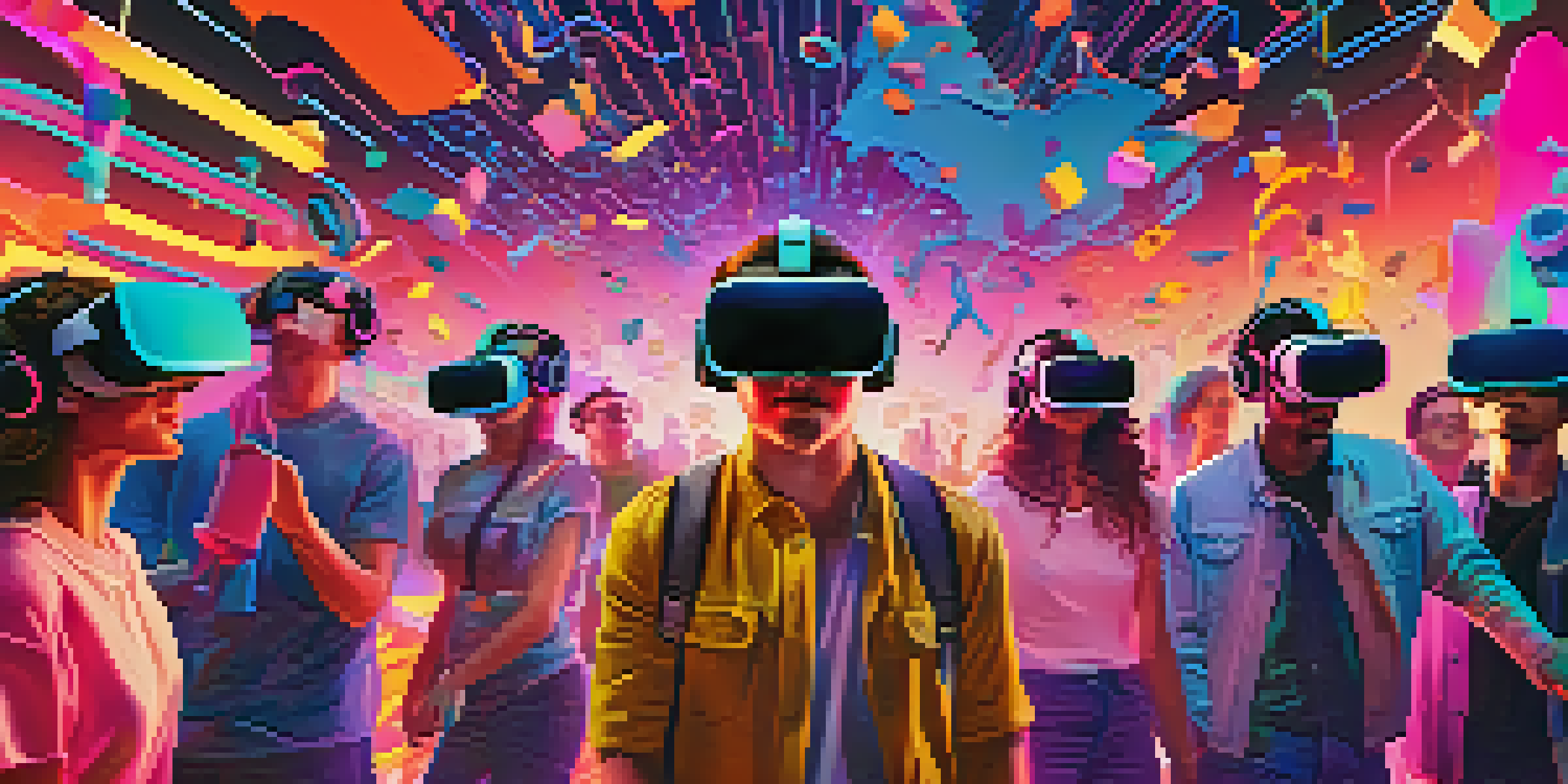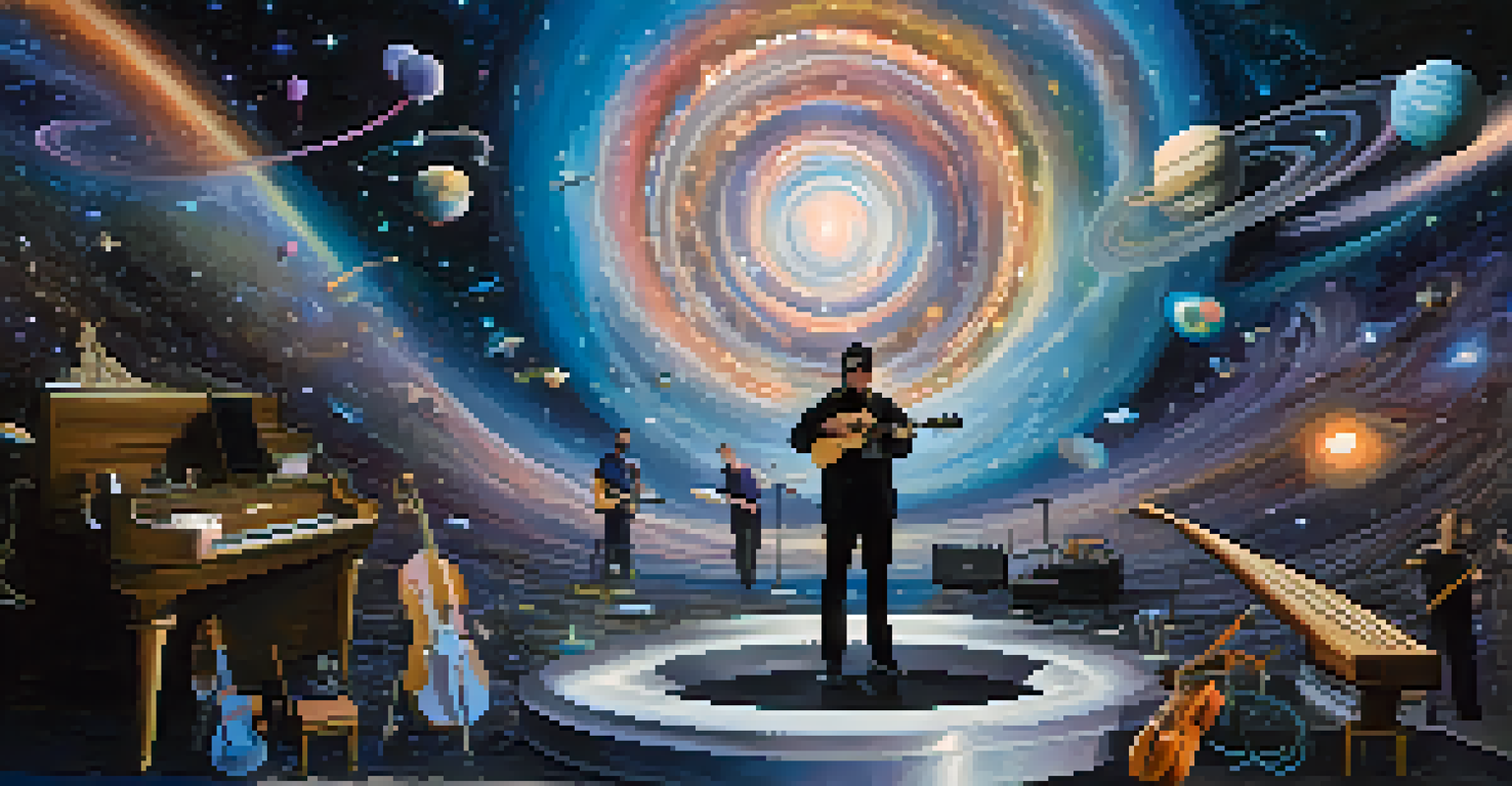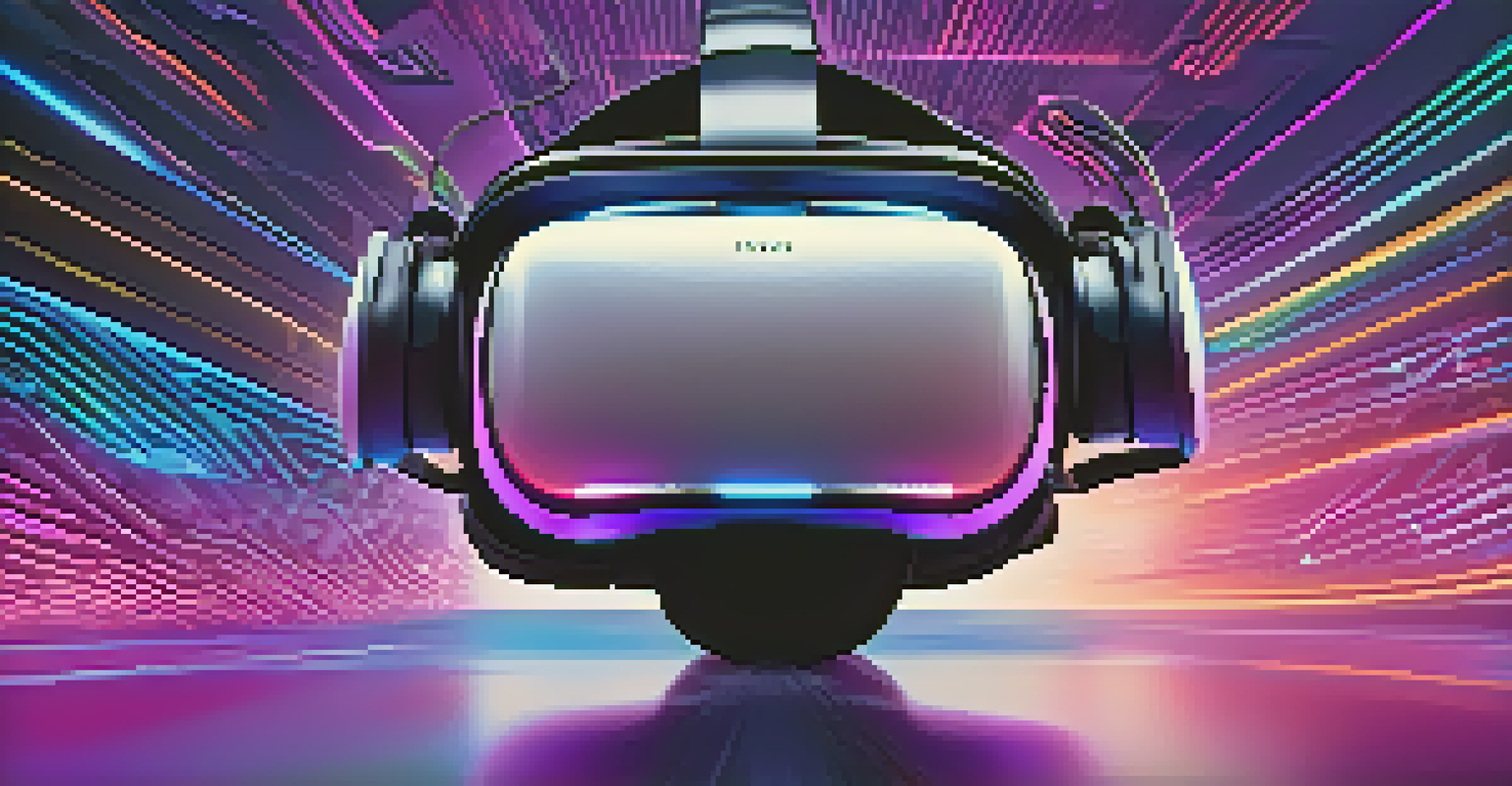The Use of VR in Music Videos: A Creative Transformation

Understanding Virtual Reality in Music Videos
Virtual reality (VR) is a technology that immerses users in a digital environment, allowing them to experience a different reality. In music videos, VR creates an engaging experience that transcends traditional viewing, allowing fans to feel like they are part of the action. This transformation brings a new dimension to storytelling in music, making each video a unique journey.
Virtual reality is the ultimate empathy machine.
Imagine stepping into your favorite song, where you can explore the artist's world, interact with elements, and even influence the direction of the narrative. This immersive experience captivates audiences, transforming passive listeners into active participants. VR music videos are not just watched—they are experienced, fostering a deeper connection between the artist and the audience.
As technology advances, the potential for creativity in VR music videos grows exponentially. Artists can experiment with visuals and soundscapes in ways that were previously unimaginable. The result is a fresh, innovative approach to music that resonates with today's tech-savvy generation.
The Benefits of Using VR in Music Videos
One of the most significant benefits of VR in music videos is the heightened level of engagement it offers. Viewers can explore the surroundings and interact with the environment, which leads to a more memorable experience. This interactive nature keeps fans coming back, eager to revisit their favorite videos and discover new details.

Additionally, VR allows artists to express their creativity without the limitations of traditional filming techniques. They can create stunning visual effects and imaginative landscapes that push the boundaries of what’s possible. This opens up a world of opportunities for storytelling, giving artists a platform to convey their messages in unique and impactful ways.
VR Enhances Engagement in Music Videos
Virtual reality transforms music videos into immersive experiences, allowing fans to actively participate and connect with the artist.
Moreover, VR music videos can reach a global audience. Fans from different parts of the world can enjoy the same immersive experience without geographical barriers. This accessibility helps artists expand their reach and connect with diverse audiences on a more personal level.
Case Studies: Artists Embracing VR Technology
Several artists have successfully incorporated VR into their music videos, setting a trend that others are beginning to follow. For instance, the band OK Go is known for their innovative and visually striking videos, and they took it a step further with a VR experience that allowed fans to immerse themselves in their world. This creative leap not only showcased their music but also highlighted their commitment to pushing artistic boundaries.
The future of music videos is not just about visuals; it's about creating immersive experiences that connect artists with their audience on a deeper level.
Another excellent example is the collaboration between the artist Björk and VR technology, where she created a groundbreaking music video that transformed the viewing experience into an emotional journey. By using VR, she was able to convey complex themes and emotions in a way that resonated deeply with her audience. This fusion of art and technology has inspired many other artists to explore similar avenues.
These case studies illustrate how VR can redefine music videos, offering new ways to engage and connect with fans. As more artists embrace this technology, we can expect to see even more creative and immersive projects that challenge the status quo.
The Role of Technology in Enhancing VR Music Videos
The evolution of technology plays a crucial role in the effectiveness of VR music videos. Advances in graphics, sound design, and hardware have made it possible to create stunning visual experiences that captivate viewers. High-quality headsets and user-friendly platforms ensure that audiences can easily access and enjoy these immersive experiences.
Moreover, the integration of spatial audio technology elevates the experience even further. This technology allows sounds to be perceived from different directions, making viewers feel as if they are inside the music itself. This level of auditory immersion enhances the overall impact of the video, creating a holistic experience that engages multiple senses.
Creative Freedom with VR Technology
VR technology enables artists to explore innovative storytelling and visual techniques, pushing the boundaries of traditional music video production.
As technology continues to improve, the possibilities for VR music videos will expand even more. Artists will have access to tools that make it easier to create intricate and compelling narratives, pushing the boundaries of creativity and engagement in the music industry.
Challenges and Limitations of VR Music Videos
While the potential for VR in music videos is vast, it is not without its challenges. One significant barrier is the cost associated with producing high-quality VR content. Artists and producers must invest in specialized equipment and software, which can be a daunting task for independent musicians or smaller labels.
Additionally, not all audiences have access to VR technology. While adoption is on the rise, many fans still rely on traditional viewing methods. This limitation can hinder the reach of VR music videos, as not every fan can experience the content as intended. Artists must find a balance between innovative VR experiences and accessible formats for their audience.
Lastly, the learning curve associated with VR production can be steep. Creators must familiarize themselves with new technologies and storytelling techniques to effectively convey their vision. This can be time-consuming and may deter some artists from venturing into the world of VR.
The Future of VR in the Music Industry
As the music industry continues to evolve, the future of VR looks promising. With ongoing advancements in technology and an increasing interest from artists, we can expect to see a surge in VR music video productions. This growth will likely lead to new creative collaborations and innovative projects that redefine how music is experienced.
Moreover, as more artists experiment with VR, audiences will become more familiar with the format, leading to broader acceptance and demand for immersive content. This shift could encourage more investment in VR technology and resources, making it more accessible to a wider range of artists.
Challenges of VR Implementation
Despite its potential, VR music videos face challenges such as high production costs and limited audience access to VR technology.
Ultimately, the future of VR in music videos is not just about technology; it’s about creativity and connection. As artists harness the power of VR, they will continue to forge deeper relationships with their fans, creating experiences that resonate on a personal level and transform the way we enjoy music.
Conclusion: The Impact of VR on Music Video Creativity
In conclusion, the use of VR in music videos represents a significant creative transformation in the industry. By offering immersive experiences that engage and captivate audiences, VR is reshaping how we perceive and interact with music. As technology advances and artists embrace these opportunities, the future of music videos is bound to be more exciting and innovative than ever.
The unique ability to combine storytelling with interactivity allows artists to create memorable experiences that resonate with fans long after the video ends. This shift not only enhances the artistic expression of musicians but also fosters a sense of community among fans who share these experiences.

As we look ahead, it’s clear that VR will continue to play a vital role in the evolution of music videos, pushing the boundaries of creativity and transforming the way we connect with music. The journey has just begun, and we can't wait to see where it leads.